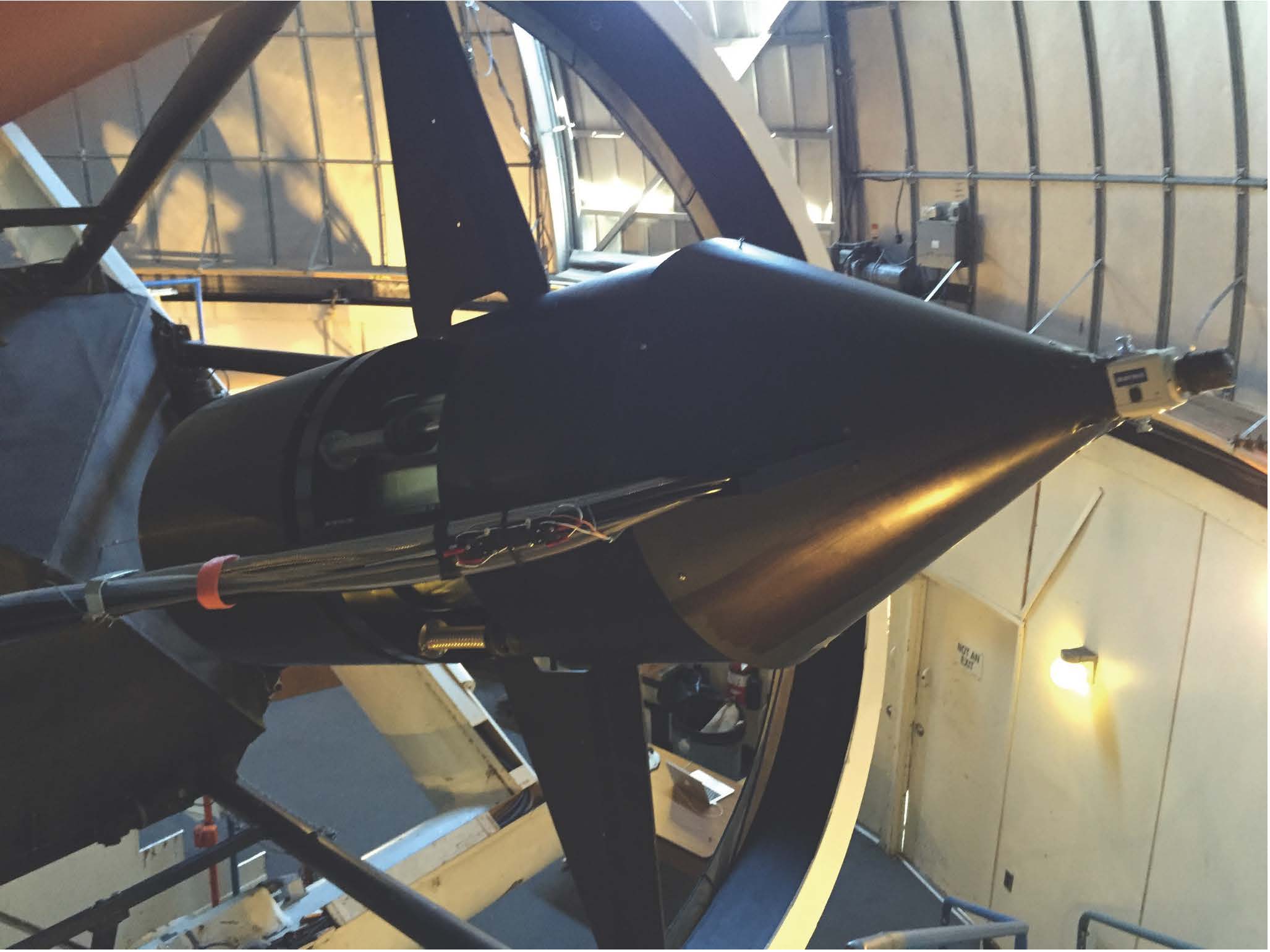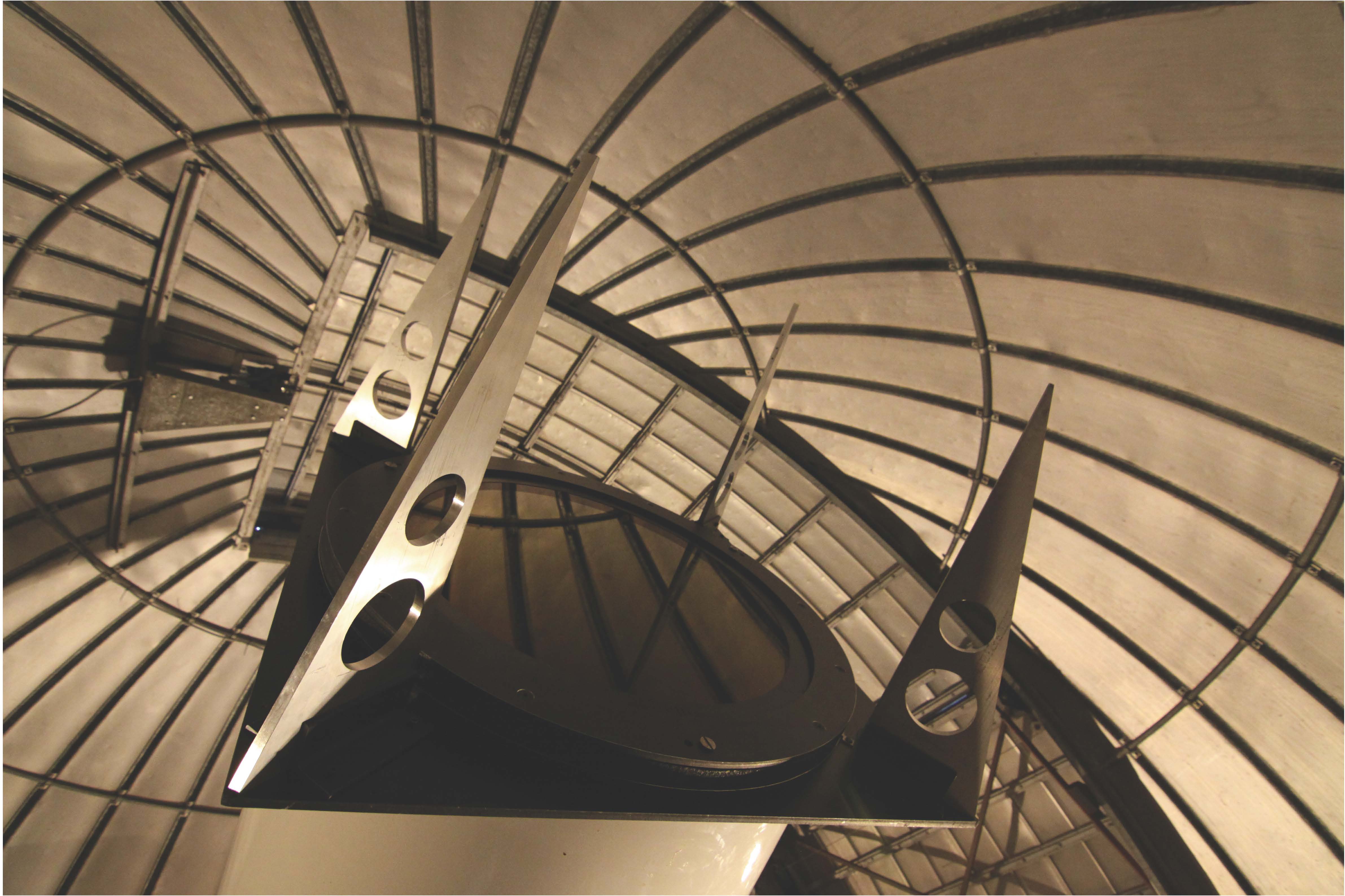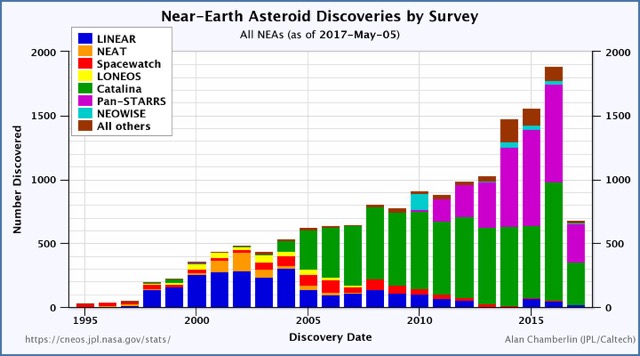Great Year for Catalina Sky Survey
by Eric Christensen
The Catalina Sky Survey (CSS) operates two survey telescopes on Mt. Lemmon (Tucson, Arizona) in search of Near-Earth Objects (NEOs), or asteroids and comets that can approach the orbit of the Earth to less than 45 million kilometers. In 2016, CSS deployed new cameras at both survey telescopes: the 1.5-m prime focus reflector (figure 1) and the 0.7-m Schmidt (figure 2). These cameras, built locally in Tucson by Spectral Instruments Inc., increased the fields of view of each telescope by factors of 4x and 2.4x, respectively. These upgrades have allowed CSS telescopes to survey significantly larger areas of sky, leading to an uptick in the discovery rate.
2016 was a record year for NEO discovery: CSS led the league with 930 discoveries (a factor of 1.5x better than CSS’s previous best year), and together with other surveys, found a total of 1,889 NEOs (a factor of 1.2x more than the previous best year). The first four months of 2017 show similarly encouraging results. CSS is a long-term leader in the NEO discovery effort, accounting for over 45% of the known catalog of NEOs (figure 3).
At CSS we continue to work to optimize our workflow, modify our survey strategies, and tune our systems to maximum sensitivity. The recent instrumentation upgrades have provided a significant boost in discovery capacity, leading to new opportunities and challenges for the survey.
 Figure 1
|
 Figure 2
|
 Figure 3
|

